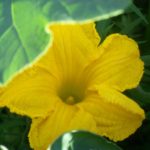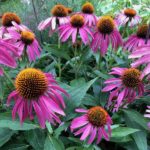
I recently finished reading a fascinating book by Judith Flanders – A Place for Everything: The Curious History of Alphabetical Order. If you are laughing at the idea that alphabetical order can be fascinating, stay with me. (And this is absolutely related to weeds and medicinal herbs.)
Alphabetical order was not always a “thing”. The alphabet at the beginning was itself fluid and did not have an exact sequence. Using it to order anything would have been impossible. Early categorization efforts were focused on perceived importance, size, location, status, and a host of other methods.
Flander’s book touches on the history of language, dictionaries, encyclopedias, and most importantly our human need to categorize things. Order does not exist out in the world, but is something we create to help us make sense of the unruliness. And while categorizing things can create a framework for understanding it can also shape and limit how we view the world. And that’s the challenging part. We don’t always see the limitations.
Weeds versus Medicinal Herbs
When I think about this idea as related to plants, what immediately springs to mind is the labels we apply to weeds and medicinal herbs. In truth, many plants fall into both categories, but if they are popularly thought to belong in one category more than the other, they are treated differently.
As an example, the medicinal herb pu gong ying has been part of traditional Chinese medicine for over a thousand years. Some of its many uses include stabilizing blood sugar and toning the liver and kidneys. It is also a nutritious food, high in calcium, iron, and vitamins. All parts of the plant are edible and it is very easy to grow.
As a medicinal herb this plant garners a lot of respect. But if I tell people I am describing dandelions, they often lose interest. The label of weed shapes their perception. Sadly, many people are willingly apply toxic chemicals to their yard, not only killing dandelions but sending toxins into the environment. It does not make sense. And there are other medicinal herbs that suffer this same disrespect – yarrow, chicory, plantain, purslane, lamb’s quarter.
Exploring this concept further, we could ask why our category of beautiful landscapes includes the idea of a mono-culture of green grass. How does that serve us? It is not related to our health or the health of the planet.
Categories and labels can simplify our world, but it’s helpful to remember that they are somewhat arbitrary human constructs. We can develop an intentional practice of viewing the world as if seeing it for the first time. Letting go of culturally prescribed labels, we can be open to questioning and discovering what is really there in the garden and the rest of the world. We just might find beauty, healing, and connection.

Announcements
Please join me for a Book Release Party on February 11th at 6 PM (mountain time) for my book, Growing Mindful – Explorations in the Garden to Deepen your Awareness, hosted by Colorado Mental Wellness Network. The event is free, and we are giving away one signed copy of the book. Click here for the invitation and details. Register by February 10th to be entered in the drawing.
This month’s issue of Aspire magazine has an article by me, Spring Renewal – Four Plant Based Practices. Check it out here.


